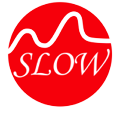Routegadget Help
RouteGadget is quite intuitive and very easy to use. Here’s a short summary to give you a quick start, adapted from www.routegadget.co.uk by Paul Frost.
General
- Once you have loaded an event file, you move the map around the screen by pressing and holding down the left mouse button somewhere on the map while moving the mouse in the desired direction. You can do this while drawing your own route, or viewing routes & animations.
- You can zoom in and out using the + & – buttons on the right of the screen.
How to add your route
- Tick the box “Draw your route”, which is located in the top-right corner of the screen.
- Choose your class and name from the drop-down lists that appear when you click the box.
- Locate the starting point (the triangle) on the map (you can move the map around as indicated above).
- Draw your route from the Start to the first control by clicking the left mouse button in places where you changed direction. The program will create a continuous route between each point that you plot. Your route is drawn in red.
- The blue line shows the direction to your next control and there is a halo round the circle of your next control. When you have created a point close enough to the centre of the ring marking the control, the Blue line switches to the next control.
- If you make a mistake while plotting the points, you can go back one or more points at any time by pressing “undo” (top-right corner).
- You can add any comments about your route by clicking in the box labelled “Type your comment”.
- When you have finished plotting your route, make sure you press the “Save route” button.
Useful features to help with drawing routes
- RouteGadget spreads your time out evenly along the route that you draw for each leg. This may not be accurate, particularly if you had trouble with any part of the leg. You can press the “+3sec” button (top-right corner) once or more to add your thinking time at a particular point (these points are displayed when viewing routes).
- If you wandered around in an area for a while, make sure to include a lot of fine detail in your drawing, even if you don’t know exactly where you were. This will appear to slow the animation in that area (and not on the part of the leg where you did well).
- The “Snap on/off” option (top-right corner) allows you to plot points near the centre of the control circle – untick the box to plot points within the control circle, and tick it again when you want the route to go straight to the control point within the circle.
Viewing routes
- To view a race animation, you need to “Choose class/course” to select the course you want to view. The number shown in brackets after each course indicates how many people have added their route to RouteGadget.
- Next, choose the competitors whose routes you would like to view. The people with * at the start of their name are those who have added their route. You can select up to 10 people who have drawn their route by clicking on their names, and then selecting the “View routes” option.
- Remember that you move the map around by pressing and holding down the left mouse button somewhere on the map while moving the mouse in the desired direction.
- To view the route animation, press “View animation” button, and press “Start” button. Small squares representing the different competitors should start from the triangle.
- During the animation you increase/decrease the animation speed with the “Speed +” and “Speed –” buttons. You can move and zoom the map, and pause the animation, using the buttons provided.
- If you select “All classes” in the dropdown menu this will show a list of all the competitors who have plotted their route, on every different course – the map will show all the controls from all courses.
If you would like any further help or advice on the software, check out www.routegadget.co.uk, run by Paul Frost.
